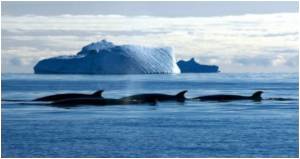A new study claims that the development of a standardized killer-whale necropsy system may boost complete data from killer-whale strandings from 2 to 33 percent

The killer-whale necropsy system was co-developed by Joe Gaydos, director of the SeaDoc Society -- a program of the UC Davis Wildlife Health Center within the School of Veterinary Medicine -- and Stephen Raverty, veterinary pathologist with the British Columbia Ministry of Agriculture.
"Because killer whales are apex predators and flagship conservation species, strandings are sad events," said Gaydos. "But this study confirms that if we make every effort to understand why the strandings occurred, we will ultimately improve the fate of the species."
Gaydos and Raverty developed the standardized killer-whale necropsy system in 2004. The analysis of strandings since then has shown that the protocol, along with increased funding for southern resident killer-whale recovery, has increased the collection of complete data from killer-whale strandings. Traditionally only one in 50 stranded whale cadavers would be analyzed; now one in three get a full examination.
The increased recovery funding was provided by the U.S. National Marine Fisheries Service and Canadian Department of Fisheries and Oceans.
For the study, researchers analyzed North Pacific killer-whale strandings dating back to 1925. The report noted that while orcas are some of the most widely distributed whales on Earth, very few dead ones are ever found. Over the last two decades, an average of just 10 a year have been discovered stranded across the entire North Pacific Ocean.
Advertisement
The study found that 88 percent of all reported killer-whale strandings are fatal, while only 12 percent of the stranded killer whales make it off the beach alive. The dead whales can provide critical clues to the species' overall life history, genetics, and health, as well as the causes of death. With such limited opportunity to do comprehensive sampling and studies, the authors noted the disturbing fact that, until recently, less than 2 percent of dead killer whales were thoroughly examined.
Advertisement
"This was a herculean effort to learn more about one of the ocean's top predators," said lead author Michelle Barbieri, a former SeaDoc Society scientist and UC Davis graduate who is currently the lead veterinarian for the National Oceanic and Atmospheric Administration's Hawaiian Monk Seal Research Program.
"We could not have done this without the collaboration of dozens of killer-whale scientists from around the world, who provided stranding and population data from Washington, Oregon, California, Alaska, Hawaii, British Columbia, Mexico, Japan and Russia," she said.
Source-Eurekalert









